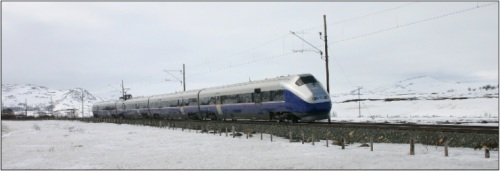It was another terrible week for Norway’s train system, as breakdowns and weather-related problems literally left passengers freezing on platforms all over the country. Transport Minister Magnhild Meltveit Kleppa called an emergency meeting with railroad bosses, and railway NSB promised immediate measures to get trains rolling again.
 For the public at large, however, the messages coming from both those in charge of railroad tracks and infrastructure ( Jernbaneverket , JBV) and train operations ( Norges Statsbane , NSB) amounted to the same refrain of excuses heard for years: Maintenance was neglected for decades, it will take several more years before signal equipment and other infrastructure are modernized, and both the railroad and railway staff are doing the best they can with the resources allotted.
For the public at large, however, the messages coming from both those in charge of railroad tracks and infrastructure ( Jernbaneverket , JBV) and train operations ( Norges Statsbane , NSB) amounted to the same refrain of excuses heard for years: Maintenance was neglected for decades, it will take several more years before signal equipment and other infrastructure are modernized, and both the railroad and railway staff are doing the best they can with the resources allotted.
It’s simply not good enough, claim passengers and politicians who criticize, cajole and throw more money at the system that seems to go into a black hole. Kleppa can brag that the current government has provided more railroad and railway funding than ever before. Still, the same problems occur again and again: Signal failure, switching problems, inadequate staffing, even lack of trains themselves.The reasons for cancellations and delays drone on, and passengers are left with an unreliable system that, as one woman interviewed by Norwegian Broadcasting (NRK) said on Friday, “has made me late for work every single day this week.” She, like many others, lack alternative modes of commuter transport. Tolls, high gasoline prices and parking make driving into the city to work financially prohibitive.
That’s probably the biggest irony of the ongoing train trouble in Norway. Authorities have been urging Norwegians to use public transport and trying to keep them from using private cars for years, by imposing high taxes on everything from the cars themselves to the gasoline that fuels them. There are now two sets of tolls to drive into downtown Oslo from the western suburbs, for example, meaning that just driving into town can cost the equivalent of nearly USD 8 in tolls alone. One way.
The train alternative, however, isn’t viable for those who need to be a certain place by a certain time. They can’t depend on the train to get them there. All major commuter lines into Oslo were severely delayed this week, while the long-distance lines to Bergen and Trondheim also were hit by various problems. On Friday evening the main commuter line north of Oslo through Nittedal (Gjøvikbanen) was shut down because of problems on the tracks that forced repair crews out in temperatures dipping down to minus-25C.
‘Totally unacceptable’
Kleppa called the situation for train passengers “totally unacceptable.” JBV is to no longer simply “put out fires” as they break out, and should instead use the so-called “PIMS method” for quality control (Punctuality Improvement Method System), a system developed for Toyota that will gather one representative from each level of the system to get to the root cause of the system failures. They in turn will tell the leaders of JBV, NSB and Flytoget (the Airport Express Train) what must be done.
The recent patch of bitterly cold weather in southern Norway has made the situation worse for the train system, but its problems have been chronic for years. “Now there should be more structure,” Arne Habberstad, leader of JBV’s new traffic division, told newspaper Aftenposten .
“I think we’re making some important steps forward now,” said NSB chief executive Einar Enger. “We already have imposed a more systematic approach and have more documentation.”

